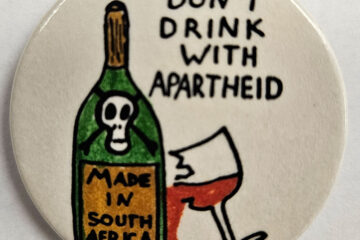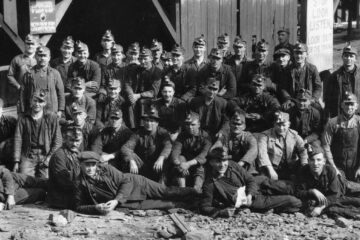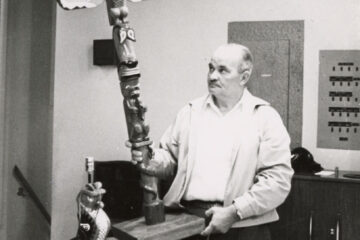Finding South Asian Workers in West Kootenay History
Guest post by Greg Nesteroff
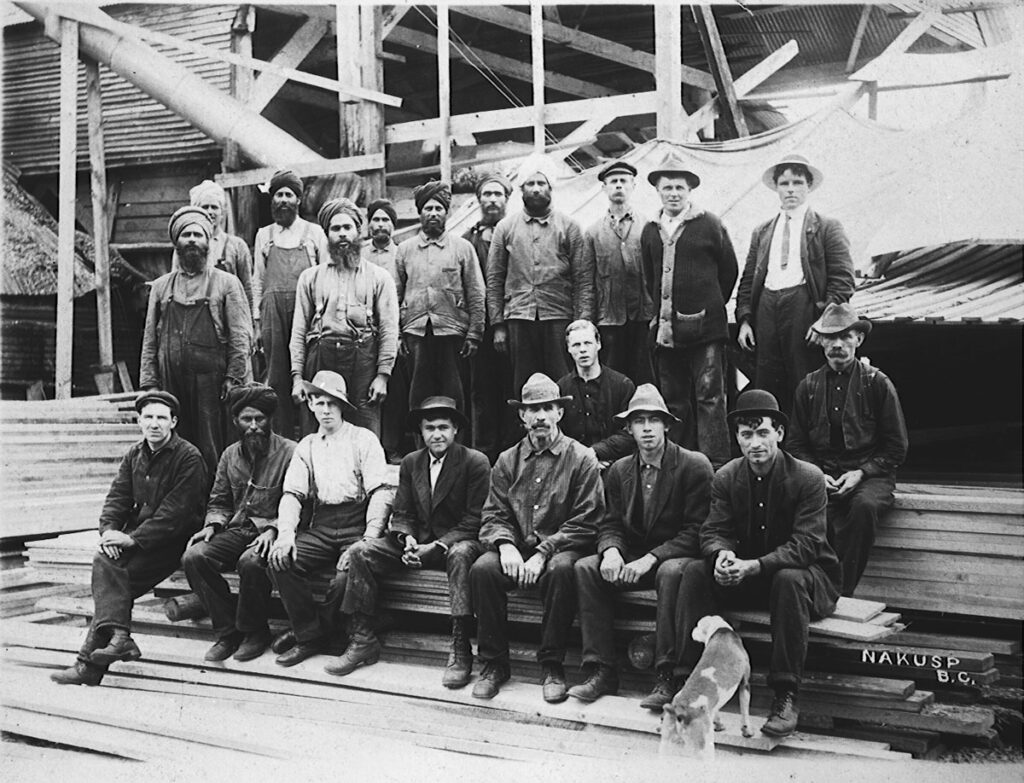
Workers at the Quance and Carlson sawmill in Nakusp are seen ca. 1912-13. Among those pictured are Lashman Singh, Serhan Singh, Jagat Singh, and Santa Singh. South Asians worked at mills in several Arrow Lakes towns. Arrow Lakes Historical Society 2014.003.5347
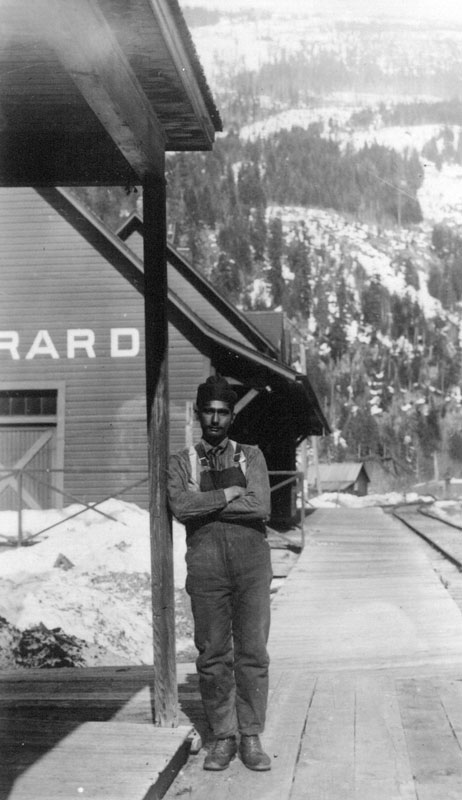
An unidentified man stands near the Gerrard train station, near the foot of Trout Lake, c. 1910s. The 1911 census found 28 South Asian men working there as railway trackmen. Greg Nesteroff collection.
The BC Labour Heritage Centre’s recent book Union Zindabad! cites a newspaper item revealing South Asian sawmill workers in the Kootenay Lake town of Kaslo “successfully struck for more wages” in May 1907. This fleeting mention piqued my interest considerably.
While the history of South Asians at Golden is reasonably well known, little or nothing has been written about their early presence in the West Kootenay. They were employed in sawmills at various places around that time, including Nakusp, Arrowhead, and Comaplix on Upper Arrow Lake; Westley, near Castlegar, on Lower Arrow Lake; and Procter on Kootenay Lake. But details are lacking.
In hopes of finding more, I checked Kaslo’s weekly newspaper, The Kootenaian, which told me nothing more about the strike but did provide additional context.
It turns out the first South Asian to visit Kaslo (as well as neighbouring towns like Nelson, Rossland, and Phoenix) was a prominent mining engineer, Nanabhai D. Darhu, who toured the area in October 1906 as part of a 14-month cross-Canada trip to collect information on mineral resources for the Indian government.
South Asian Men Arrive in Kaslo in 1907
But Darhu doesn’t seem to have had anything to do with the 22 South Asian men who arrived there the following March to work for the W.E. Cooke Lumber Co. The mill had been idle for some time before Cooke, then mayor of Harvey, North Dakota, purchased it in June 1906 thanks to financial incentives from the City of Kaslo. But it took until early 1907 to restart operations.
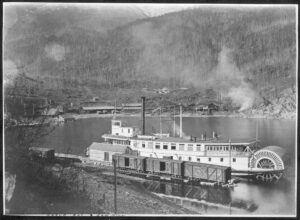
A View of Kaslo Bay sometime before 1908, showing the SS International docked in the foreground and the sawmill and planing mill in the background. Kootenay Lake Historical Society 991.005.0010.
An unknown number of additional South Asian men arrived to work there by the end of April. They apparently lived in a boarding house near the mill that The Kootenaian described as an “elegant mansion … filled with strange and awe-inspiring perfumes.”
The newspaper didn’t otherwise say much about the workers — except when they were in trouble, and then it disparaged them in condescending and racist terms.
Three men, Ha Lama Singh, Go Lan Singh, and Jo a La Singh, were jailed on a charge of assaulting Goulah Singh but let off with a warning. Another unnamed man was accused of stealing chickens.
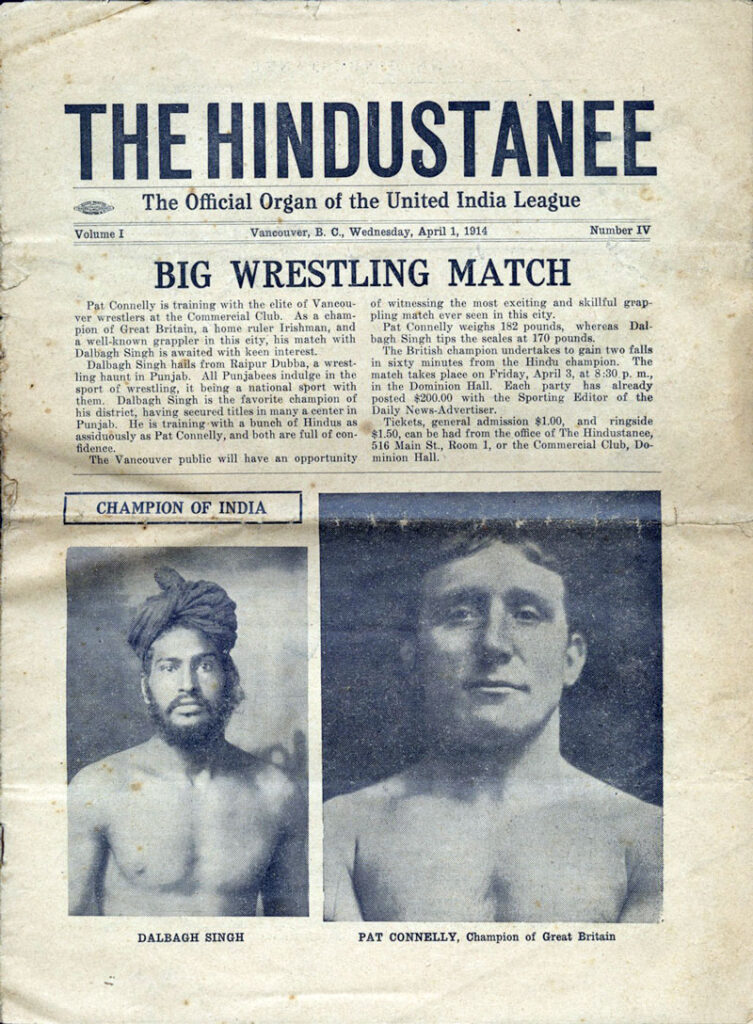
Wrestling was very popular in South Asia and many wrestlers came to B.C., as seen in this 1914 Vancouver publication The Hindustanee. Older generations reportedly stressed it as a form of self-defence and it remained popular among South Asians in Canada.
Singh “handled Terry as easily as a board at Cooke’s sawmill”
How much day-to-day interaction the millhands had with the rest of Kaslo’s population isn’t known, but at the city’s May Day celebration, a champion wrestler, Poring Singh, took on Terence O’Grady, recently arrived from Butte, Montana.
A packed Eagles Hall watched as Singh, described as “a fine looking man of 180 pounds, much fancied by his fellow countrymen present,” made short work of O’Grady. The match was over in 16 minutes. The Kootenaian said Singh “handled Terry as easily as a board at Cooke’s sawmill.”
Singh offered to take on any other challengers, “but no one was willing to contest with the stalwart victor, who stalked about very well pleased.”
However, Poring Singh appears to have been fired from the sawmill a few weeks later. The Kootenaian suggested he was “keeping himself trim by pitching some of his tribesmen over lumber piles and knocking the stuffing out of all objectors.”
Seventeen men loyal to him quit in solidarity but were soon replaced by others said to be “honorably discharged British soldiers … of a higher class and caste than those who came before.”
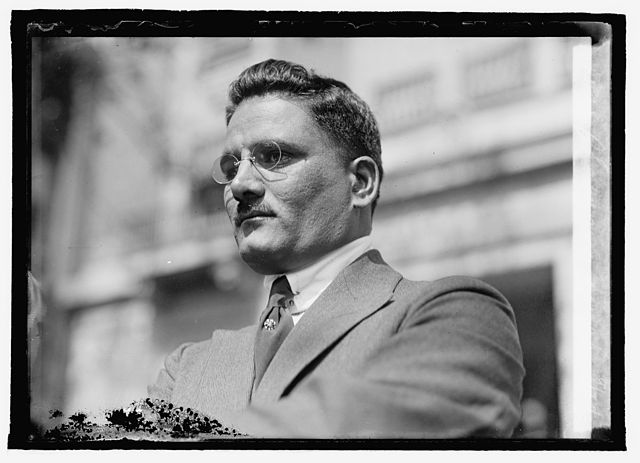
A photograph of Bhagwan Singh Gyanee, President of the Ghadar Party, taken in 1919. SAADA/Wikimedia Commons
Did Bhagwan Singh recruit sawmill workers for Kaslo?
At least some of the workers seem to have been procured through a man named Bhagwan Singh, who at one point sent a wire from Kaslo indicating he had a dozen men available to work at any mill that would hire them.
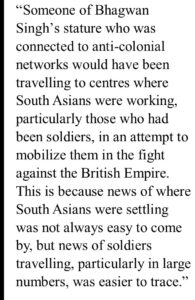
Dr Anushay Malik, co-author of “Union Zindabad!”
A prominent priest with the same name was deported from B.C. in 1913 and went on to become president of the Ghadar Party in India. He was also known for his poetry promoting Indian nationalism. Might it have been the same guy?
Dr. Anushay Malik of Simon Fraser University, one of the co-authors of Union Zindabad!, says there is no way of knowing for sure, but thinks it’s likely, partly because of the workers described as ex-soldiers.
“Someone of Bhagwan Singh’s stature who was connected to anti-colonial networks would have been travelling to centres where South Asians were working, particularly those who had been soldiers, in an attempt to mobilize them in the fight against the British Empire. This is because news of where South Asians were settling was not always easy to come by, but news of soldiers travelling, particularly in large numbers, was easier to trace.”
She notes former British soldiers sometimes remained loyal to the British and “tended to be good workers and to listen to their employers.” However, others who would have been upset in 1907 about land reforms brought by the British in India would have been willing to join in protests against their employers.
Wrestling as a cultural symbol of resistance and self-defence
Malik also finds Poring Singh’s wrestling exploits intriguing, as wrestling was very popular in South Asia and many wrestlers came to BC. Older generations reportedly stressed it as a form of self-defence and it remained popular among South Asians in Canada into the 1960s.
Further reading of The Kootenaian would doubtless turn up additional details. But it appears that by early 1909 the South Asian workforce moved on from Kaslo, for W.E. Cooke found himself in court on a charge of violating the Alien Labour Act — by hiring Americans.
No South Asians show up in Kaslo on the 1911 census. However, 28 were listed as railway trackmen further north at Gerrard, at the foot of Trout Lake. The census indicated all arrived in Canada between 1906 and 1908. There’s no easy way of telling if any of them were among the millhands who once went on strike in Kaslo.
Greg Nesteroff is a Kootenay historian and news reporter. He publishes The Kütne Reader: Adventures in Kootenaiana an online publication dedicated to the history of the West Kootenay/Boundary region of British Columbia, the territory of the Sinixt and Ktunaxa people.
